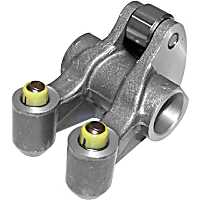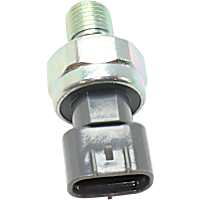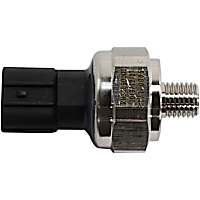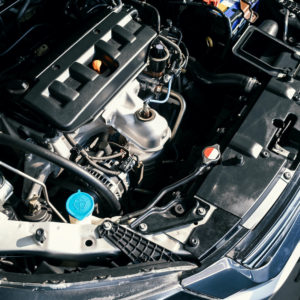The OBD code P2646 is a code that’s often characterized by reduced engine performance. Find out what this code means, what causes it, and get additional information on technical service bulletins concerning this OBD-II code with this simple guide.
What Does the P2646 Code Mean?
Diagnostic Trouble Code (DTC) P2646 code stands for “A” Rocker Arm Actuator System Performance/ Stuck Off (Bank 1).” It’s a generic OBD-II powertrain code supported by a variety of makes and models.
Some vehicles, such as the Honda Civic, feature a Variable Timing and Lift (VTEC) system. This system increases fuel efficiency and reduces engine exhaust at all levels of engine speeds, vehicle speeds, and engine load. It helps more with engine power than it does with fuel economy.
To learn more about variable valve lift in VTEC and other systems, read our quick discussion here.


In vehicles equipped with VTEC, the rocker arm control solenoid supplies hydraulic pressure to the variable timing and lift mechanism. This allows the VTEC system to adjust valve timing and lift as needed. The VTEC system controls the rocker arm control solenoid through the powertrain control module (PCM).
The PCM uses the rocker arm oil pressure switch to monitor and verify the oil pressure so the variable timing mechanism can be properly activated. If the PCM does not receive the correct voltage signal back from the rocker arm oil pressure switch, it may set code P2646.
The “A” in this OBD code’s definition indicates the intake camshaft. Meanwhile, the “Bank 1” refers to the side of the engine that has the #1 cylinder on engines with a ‘V’ configuration.
What are the Possible Causes of the P2646 Code?
As with other OBD-II codes, P2646 has several potential causes. Knowing the root cause of a trouble code is important in diagnosis and repair. Listed below are just some causes for the P2646 code to appear.
- Low or dirty engine oil
- Low oil pressure does not meet specs
- An issue with the PCM, such as an outdated software
- Rocker arm (VTEC) oil pressure sensor failure
- Faulty rocker arm (VTEC) oil control solenoid
- Wiring issue
What are the Common Symptoms of the P2646 Code?
If your vehicle exhibits several of the symptoms listed below, it might be time to go to a professional mechanic or technician to have your vehicle checked for repairs. Note that the P2646 code needs to get addressed immediately as soon as you notice the symptoms or encounter the trouble code using your scanner tool.
- Engine light is on
- Decreased engine performance
- Increased fuel consumption
How to Diagnose the P2646 Code
Given that OBD-II codes like P2646 have several likely causes, it’s important to diagnose the problem accurately so that repairs get done properly. Here are some video resources to help you get an idea of what the diagnostic process might involve:
How to Fix the P2646 Code
There’s no single way to fix the P2646 code since there are several possible causes that trigger it in the first place. This makes the job tricky, which is why most people just let their mechanics fix their cars for them.
However, if you feel confident in your automotive DIY skills, you can decide to fix the code yourself. You can get some help from online auto repair resources and guides or from a single-vehicle ALLDATA subscription.
Other Notes About P2646
On July 16, 2013, Honda released a factory service bulletin, SB- 10052884-2696, for the following models:
- 2003-2012 Honda Accord L4
- 2002-2005 Honda Civic Si
- 2002-2009 Honda CR-V
- 2011 Honda CR-Z
- 2003-2011 Honda Element
- 2007-2011 Honda Fit
The bulletin addressed concerns about the code P2646 appearing on the vehicles listed above. The document suggests that replacing the VTEC oil pressure switch (P/N 37250-PNE-G01, H/C 6737217) will take care of the problem.

Variable Valve Lift in VTEC and Other Systems
On the VTEC system, there are three camshaft lobes for each pair of valves controlled by this system – the three lobes all spin together – the outer lobes have less lift than the center lobe, which is activated by a locking pin whenever the ECM/PCM calls for the center lobe to provide the lift. The locking pin is driven by oil pressure delivered through an ECM/PCM controlled solenoid.
On the VTEC system, there are three camshaft lobes for each pair of valves controlled by this system – the three lobes all spin together – the outer lobes have less lift than the center lobe, which is activated by a locking pin whenever the ECM/PCM calls for the center lobe to provide the lift.
–Richard McCuistian, ASE Certified Master Automobile Technician
GM Ecotec engines have a similar three-lobe setup, but the locking pin moves perpendicular to the camshaft rather than parallel to it, and Ecotec engines can store the same code for the same reason – it’s all about whether the oil pressure is being delivered to move the locking pin.
Audi engines have a different way of handling variable valve lift – they actually have two lobes – one for high lift and the other for the lower lift – both lobes driven by a sectioned shaft that moves from side to side on the splines to change the lift. The Audi doesn’t have a P2646 code in its DTC list.
Products Mentioned in this Guide
Any information provided on this Website is for informational purposes only and is not intended to replace consultation with a professional mechanic. The accuracy and timeliness of the information may change from the time of publication.

 Rocker Arm
Rocker Arm
 Oil Pressure Switch
Oil Pressure Switch
 Oil Pressure Sensor
Oil Pressure Sensor














